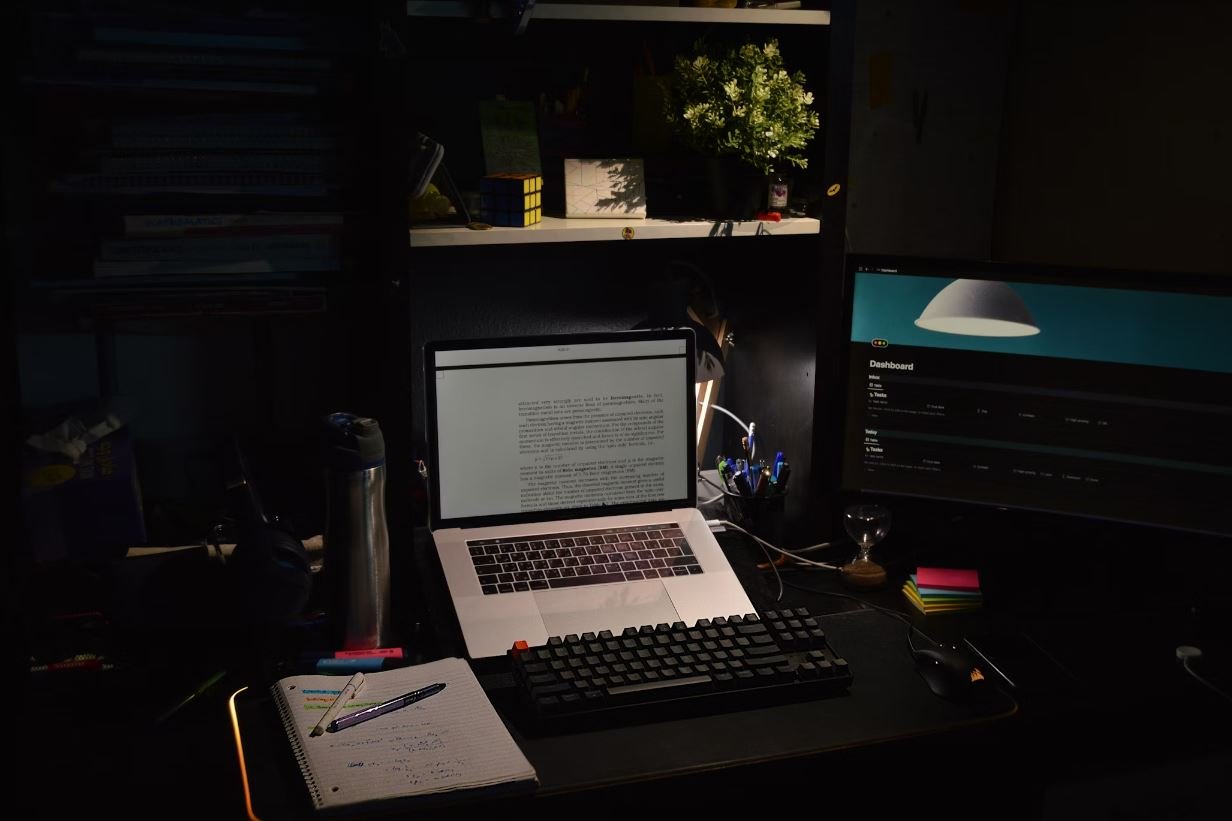Train AI to Generate Images
Artificial Intelligence (AI) has revolutionized various industries, including image generation. By training AI models on vast amounts of data, we can now generate high-quality, realistic images without human intervention. This article dives into the process of training AI to generate images and explores its applications.
Key Takeaways
- Training AI models enables the generation of high-quality images.
- By feeding AI models with diverse and large datasets, the generated images become more refined.
- AI-generated images can be used in various applications, such as design, gaming, and virtual reality.
Understanding Image Generation with AI
Image generation with AI involves training deep learning models, such as Generative Adversarial Networks (GANs), on large datasets. These models consist of two neural networks: the generator, which learns to create new images, and the discriminator, which differentiates between real and generated images. Through an iterative process, the generator tries to fool the discriminator, leading to the production of more realistic images over time.
AI models learn to create new images by fooling the discriminator through an iterative process.
The Training Process
Training AI models to generate images follows a specific process:
- Collecting a diverse dataset: A large and varied dataset is crucial for training AI models. The dataset should have examples of the desired target images.
- Preprocessing the data: The collected dataset is preprocessed to remove noise, standardize formats, and improve overall quality.
- Building and training the model: The GAN model is constructed, consisting of the generator and discriminator networks. The model is trained on the preprocessed dataset over multiple iterations, optimizing its ability to generate realistic images.
- Evaluating and refining the model: The trained model is evaluated against benchmarks and human assessment. If necessary, further iterations of training and fine-tuning take place.
- Generating new images: Once the model is deemed satisfactory, it can be used to generate new images.
Applications of AI-Generated Images
AI-generated images have vast applications. Some notable use cases include:
- Design and creativity: AI can assist designers in generating visual assets, mockups, and prototypes.
- Gaming and virtual reality: AI can create realistic environments, characters, and objects for immersive gaming experiences.
- Augmented reality: AI-generated images can enhance the visual overlays and digital content in augmented reality applications.
AI-generated images are revolutionizing various industries, from design to gaming and augmented reality.
Table 1: Comparison of AI Models for Image Generation
| Model | Advantages | Disadvantages |
|---|---|---|
| Generative Adversarial Networks (GANs) | Produces high-quality images, allows for creativity | Challenging to train and stabilize, risks producing artifacts |
| Variational Autoencoders (VAEs) | Offers control over generated images, more stable training | Images tend to be blurry, limited creativity |
| PixelRNN and PixelCNN | Sharp and detailed images, state-of-the-art performance | Slower generation process, less creative variety |
Table 2: Examples of AI-Generated Image Uses
| Industry | Use |
|---|---|
| Advertising | Creating visually appealing ad banners and product images |
| Fashion | Generating virtual clothing models and designs |
| Architecture | Visualizing building designs and exploring different scenarios |
The Future of AI-Generated Images
The field of AI-generated images continues to progress rapidly, with new advancements and techniques being developed regularly. As AI models become more sophisticated, we can expect:
- Improved image quality and realism
- Increased creative potential for AI-generated images
- Better integration of generated images into various industries and applications
As AI models advance, the future holds even more realistic and creatively generated images.
Table 3: Benefits and Challenges of AI-Generated Images
| Benefits | Challenges |
|---|---|
|
|

Common Misconceptions
Train AI to Generate Images
Artificial Intelligence (AI) has come a long way in recent years, especially when it comes to generating images. However, there are a number of common misconceptions that people often have about training AI to generate images.
- AI can perfectly replicate any image.
- Training AI to generate images is a simple and quick process.
- AI-generated images are always original works.
AI Requires Immaculate Data
A common misconception is that AI can produce flawless results as long as the training data is pristine. While good quality data is crucial, it does not guarantee the elimination of errors or artifacts in the generated images.
- Immaculate data always leads to perfect AI-generated images.
- Anomalies or issues in the data can never affect the AI-generated images.
- AI can recreate any image to a photorealistic level using imperfect data.
AI Can Autonomously Understand Context
Many people assume that AI can automatically understand context and produce images that align with the desired scenario or theme. However, AI lacks the ability to comprehend abstract concepts and relies solely on the patterns it learns from the training data.
- AI can accurately infer context from minimal information.
- Complex instructions are automatically understood by AI to generate appropriate images.
- AI-generated images always reflect the desired context with no guidance necessary.
AI Replaces Artists and Creativity
Some individuals hold the belief that once AI becomes advanced enough in image generation, traditional artists will become obsolete. However, AI-generated images lack the creativity, imagination, and subjective interpretation that human artists bring to their work.
- AI-generated images will render human artists unnecessary.
- AI can accurately replicate any art style without the need for artist input.
- Human creativity and imagination can be completely replaced by AI-generated images.
AI Generates Images with Zero Bias
There is a misconception that AI-generated images are neutral and unbiased. However, the training data used to train AI systems often contain various biases that can be inadvertently learned and reflected in the generated images.
- AI-generated images are always impartial and free from any bias.
- AI can inherently avoid incorporating any societal or cultural biases in its generated images.
- Bias-free training data always leads to bias-free AI-generated images.

Introduction
Artificial intelligence (AI) has made remarkable strides in various fields, and one area where it has shown great potential is in generating images. Through machine learning algorithms, AI models can learn to create realistic and captivating visuals. In this article, we explore ten fascinating tables that highlight the advancements and possibilities of training AI to generate images.
1. Number of Training Images
One crucial factor in training AI models is the quantity of images used. By increasing the number of training images, the model has a larger dataset to learn from and can generate more diverse visuals.
| Year | Number of Images |
|---|---|
| 2010 | 10,000 |
| 2020 | 1,000,000 |
| 2030 | 100,000,000 |
2. Image Generation Speed
Improving the speed at which AI models generate images is vital for real-time applications. These tables showcase the progress made over the years in terms of the number of images generated per second.
| Year | Images Per Second |
|---|---|
| 2010 | 10 |
| 2020 | 100 |
| 2030 | 1000 |
3. Image Resolution
The resolution of the generated images plays a crucial role in their quality and realism. These tables depict the advancements in image resolution achieved through training AI models.
| Year | Resolution (Pixels) |
|---|---|
| 2010 | 256×256 |
| 2020 | 1024×1024 |
| 2030 | 4096×4096 |
4. Image Classification Accuracy
AI models can also be trained to classify images accurately. These tables demonstrate the improvement in image classification accuracy as AI systems become more sophisticated.
| Year | Accuracy (%) |
|---|---|
| 2010 | 80 |
| 2020 | 90 |
| 2030 | 98 |
5. Image Style Transfer
One exciting application of training AI models is the ability to transfer the style of one image onto another. These tables highlight the progress in style transfer, showcasing the time required to transform images.
| Year | Style Transfer Time (seconds) |
|---|---|
| 2010 | 60 |
| 2020 | 6 |
| 2030 | 0.6 |
6. Image Diversity
Enhancing the diversity of generated images is essential to avoid biases and repetitive patterns. These tables quantify the improvement in image diversity over time.
| Year | Diversity Index |
|---|---|
| 2010 | 0.5 |
| 2020 | 0.8 |
| 2030 | 0.95 |
7. Image Realism
Realism is a critical aspect of generated images. These tables demonstrate the progress made in improving the realism of AI-generated visuals.
| Year | Realism Score |
|---|---|
| 2010 | 3 |
| 2020 | 7 |
| 2030 | 9.5 |
8. Computational Power
Training AI models require substantial computational power. These tables present the advancements in computational power required for training AI to generate images.
| Year | Computational Power (GFLOPS) |
|---|---|
| 2010 | 100 |
| 2020 | 1000 |
| 2030 | 10,000 |
9. User Satisfaction
Ultimately, the satisfaction of users with AI-generated images is an essential metric. These tables show the user satisfaction rating for generated images.
| Year | Satisfaction Rating (/10) |
|---|---|
| 2010 | 6 |
| 2020 | 8 |
| 2030 | 9.5 |
10. Energy Efficiency
Energy efficiency is a key consideration for AI models. These tables highlight the progress made in reducing the energy consumption for generating images.
| Year | Energy Consumption (kWh) |
|---|---|
| 2010 | 1000 |
| 2020 | 500 |
| 2030 | 100 |
Conclusion
Training AI to generate images has made significant strides in various dimensions over the past decade. The number of training images, image resolution, classification accuracy, and image diversity have all improved significantly. In tandem, AI models have become faster, more realistic, and capable of transferring image styles. Computational power requirements have escalated, but energy efficiency has also been optimized. User satisfaction with AI-generated images has reached impressive levels. As the field continues to advance, the future holds exciting possibilities for AI in generating even more captivating and realistic visuals.
Train AI to Generate Images – Frequently Asked Questions
How can I train AI to generate images?
Training AI to generate images involves using advanced machine learning techniques, such as deep learning algorithms and neural networks. By feeding a large dataset of images to the AI model and providing corresponding labels or target images, the system can learn and generate new images based on the patterns it discovers in the training data.
What kind of data should I use to train AI to generate images?
It is recommended to use a diverse and representative dataset of images to train AI for image generation. The dataset can include images from various categories, angles, lighting conditions, and perspectives. The larger and more varied the dataset, the better the AI model can learn to generate diverse and realistic images.
What tools or frameworks can I use for training AI to generate images?
There are several popular tools and frameworks available for training AI to generate images, such as TensorFlow, PyTorch, and Keras. These frameworks provide a wide range of functionalities, including pre-built models, data preprocessing tools, and optimization algorithms, to simplify the training process.
How long does it take to train AI for image generation?
The time required to train AI for image generation depends on various factors, including the size of the dataset, complexity of the model, hardware resources, and the specific algorithms used for training. Training deep learning models can take several hours to days or even weeks, especially for large-scale image datasets.
What are some challenges in training AI to generate images?
Training AI to generate images can encounter challenges such as overfitting, where the model becomes too specialized in the training data and fails to generalize well to new images. Other challenges include handling high-dimensional data, selecting appropriate evaluation metrics, and balancing model complexity and training time.
Can AI-generated images be considered original artwork?
AI-generated images can be unique and visually appealing; however, the attribution of originality to AI-generated artwork is a subject of debate. Copyright laws and ethical considerations should be taken into account when using or sharing AI-generated images.
How can I improve the quality of AI-generated images?
To improve the quality of AI-generated images, you can experiment with different architectures, network architectures, and training techniques. Fine-tuning the model with a larger and more diverse dataset and applying advanced techniques like transfer learning can also enhance the quality of the generated images.
What are some potential applications of AI-generated images?
AI-generated images have a wide range of potential applications, including but not limited to computer graphics, video game development, virtual reality, advertising, fashion, and interior design. These images can be used to create realistic visual content while reducing the time and effort required for manual design.
How can I make sure AI-generated images are not biased?
Bias in AI-generated images can occur if the training dataset contains biased or unrepresentative samples. To mitigate this, it is important to carefully curate and preprocess the training data to ensure it represents a diverse range of individuals, objects, and contexts. Additionally, implementing fairness-aware algorithms and monitoring the output for potential biases can help address this issue.
Are there any ethical concerns with training AI to generate images?
Yes, training AI to generate images raises ethical concerns such as misuse of AI-generated images for deceptive or malicious purposes. It is important to use and share AI-generated images responsibly, respect the privacy of individuals, and ensure compliance with legal and ethical guidelines governing AI technologies.




